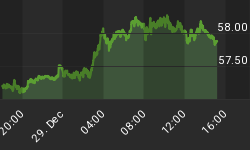Two competing projects for a natural gas pipeline from Alaska to the lower 48 states put the cost somewhere between $32 billion and $40 billion, even as the explosion of shale gas production calls the whole enterprise into question.
The Denali project backed by ConocoPhillips and BP this week filed details with regulators that estimated it would cost $35 billion to build a pipeline of 1,700 miles from Alaska's North Slope across Canada to supply the continental U.S. The filing said it would be "one of the largest private investments in North American history."
A filing earlier this year from a competing project mounted by TransCanada and ExxonMobil estimated costs for a similar route at $32 billion to $41 billion.
Both projects will now seek to line up firm commitments from customers and suppliers in a process called "open season" to analyze the feasibility of building the pipeline.
However, plummeting gas prices resulting from increased gas production from unconventional resources like shale gas - what the Cambridge Energy Research Associates called a "shale gale" in a recent report - may undermine the economics of the project, critics say. They question whether even one pipeline should be built, let alone two.
It would make more sense, these analysts say, to transport the North Slope gas to liquefaction plants for export by tanker to Asian markets - an alternative contained in the TransCanada filing. However, new initiatives to explore for shale gas in China as well as increased exports from other suppliers could put a question mark on Asia's demand for Alaskan LNG, too.
According to this week's filing with the Federal Energy Regulatory Commission, the Denali project is similar to the one from TransCanada. Both would go into service in 2020 and would deliver 4.5 billion cubic feet of gas a day to North American markets.
The alternative option in the TransCanada proposal would transport natural gas 800 miles from the North Slope to Valdez, Alaska, where it would be converted to LNG and then delivered by ship to North American and international markets. That would cost between $20 billion and $26 billion, the filing said.
The North Slope reserves are put at 35 trillion cubic feet of natural gas, while overall North American reserves, inflated by new shale gas estimates, may be as much as 3,000 trillion cubic feet.
By. Darrell Delamaide for Oilprice.com who offer detailed analysis on Crude oil, Geopolitics, Gold and most other Commodities. They also provide free political and economic intelligence to help investors gain a greater understanding of world events and the impact they have on certain regions and sectors. Visit: http://www.oilprice.com
















